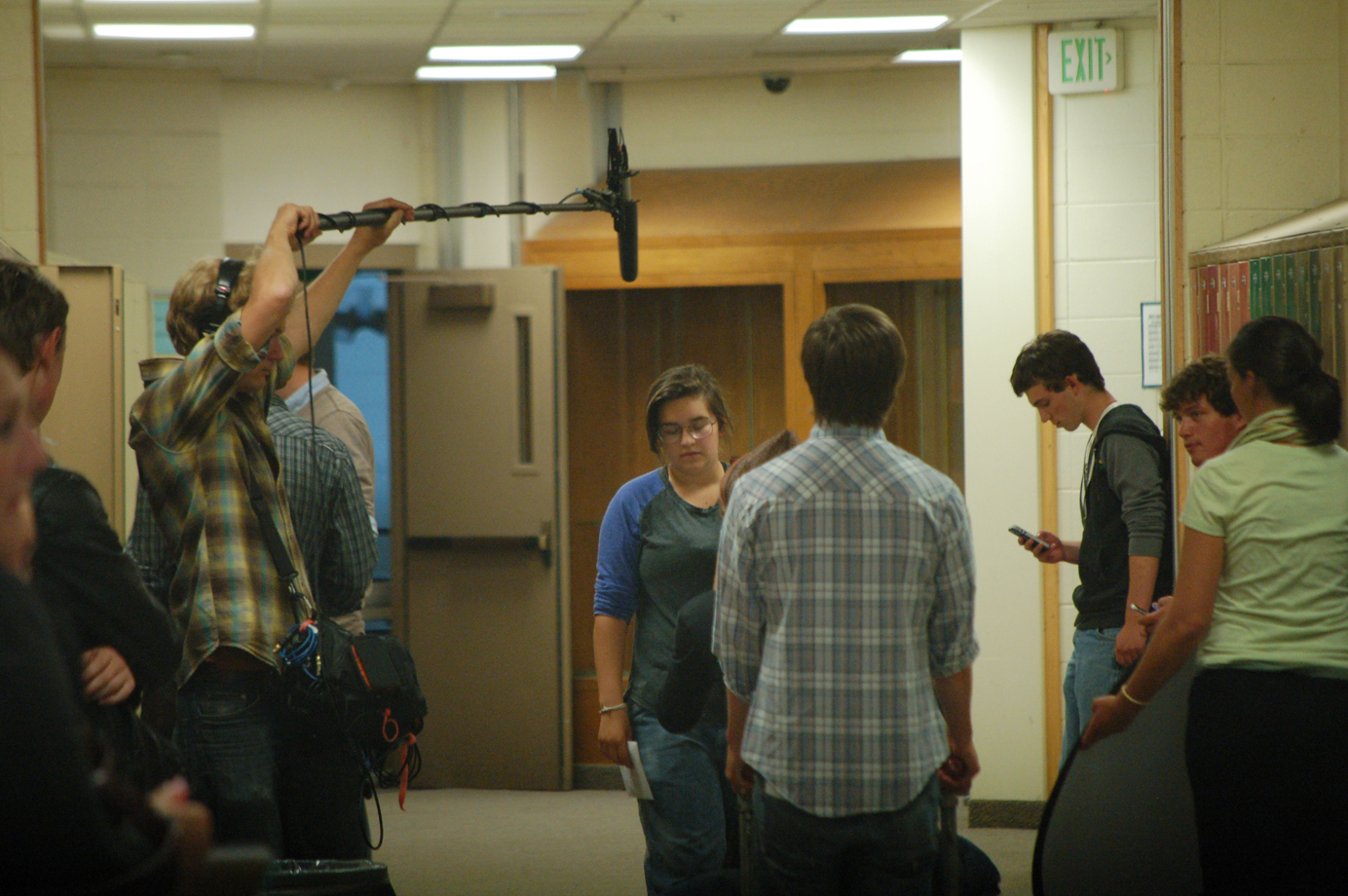It’s a scene common to most any American high school. A girl walks down a crowded hallway, students milling around lockers. Clutching her notebook, the girl shuffles her feet, looking down at the floor, as she walks by other teenagers. You can almost imagine their thoughts — “What’s up with her?” “Why’s she acting so weird?” “What a dork.”
Then, out of the blue, a mean kid rushes by and knocks the books out of her arms. The girl goes to a locker and kicks it.
“Hey,” a tall boy says to her. “You’ve been looking a little down lately. Is something wrong? Have you been thinking about … suicide?”
The girl turns to the boy and collapses into his arms with a big hug.
That’s the plot of one scene in a film being taped last week at Homer High School. Students and graduates of Homer High School, Flex School and Connections wrote and acted in the Homer Youth-Guided Suicide Prevention and Awareness film project.
Sydney Paulino played the girl, Matthew Meyer the bully and Drew Turner the nice guy. Adela Sundmark, a 2013 graduate heading off to Swarthmore College, Philadelphia, soon, wrote much of the script with suggestions and ideas from other students.
Rudy Multz, a case manager at The Center, is the director, with cinematography by Tehben Dean and sound by Jebarri Dean. It’s a collaboration between The Center and Kachemak Bay Family Planning Clinic’s R.E.C. Room, with funding by the Alaska Community Foundation.
The idea of the film is to provide teenagers with resources for suicide prevention and to help youth understand the warning signs for suicide risk, said Anna Meredith, youth program manager for family planning. The film also will increase awareness of the risk of teen suicide in Homer and promote resources available for young people feeling suicidal.
The scene shows how that works.
“What the warning signs of suicide can be and what you can do to help,” Sundmark said.
Paulino’s character illustrates the body language of someone looking depressed. In the final version, there will be thought bubbles shown from the students watching her and wondering what to do.
“Every person has a barrier,” Sundmark said. “We’re trying to get through that barrier — be someone who helps a friend.”
Turner’s actions and word show how to break the silence.
When the film is completed and post-production done, it will be used as a resource for schools, South Peninsula Hospital and other community health organizations. The film also will be available on YouTube, Meredith said.
Michael Armstrong can be reached at michael.armstrong@homernews.com.


